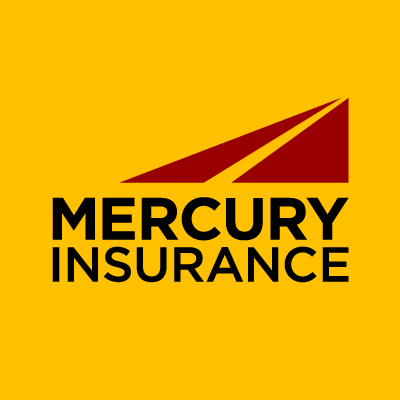If you drive an electric vehicle (EV) that isn’t a Tesla, you may wonder if you can charge your EV at one of Tesla’s Supercharger stations. After all, Superchargers deliver up to 250 kW of power, meaning you can get up to 200 miles of range in just 15 minutes—perfect for road trips or quick pit stops.
So, can other EVs use Tesla chargers? In this blog, we’ll break down which non-Tesla EVs can use Superchargers, how to access them, and what you need to know about compatibility, pricing, and availability.
Quick Background: A Previously Exclusive Network
For years, Tesla’s Supercharger network was like an exclusive club—only Tesla owners could plug in and enjoy fast, reliable charging. However, this has changed.
A couple of years ago, Tesla decided to test the waters by letting some non-Tesla EVs use their Superchargers. They kicked off a pilot program in the Netherlands in 2021, allowing EVs with the Combined Charging System (CCS) connector to plug in. Since then, they’ve expanded to other spots in Europe, like France and Norway.
In the U.S., Tesla took things a step further by rolling out the Magic Dock—a built-in adapter that allows CCS-equipped EVs to connect at select V3 and V4 Supercharger stations. The rollout, which started in 2023, is still ongoing and varies by region, but this shift is a big deal for EV owners. More charging options mean less range anxiety and more convenience. If you’re driving an EV from brands like Rivian, Jaguar, Hyundai, or Kia, it’s worth checking Tesla’s app or website to see if there’s an open Supercharger near you.
Can Other EVs Use Tesla Chargers?
Yes, other EVs can use Tesla Superchargers. As of 2025, a growing number of EV brands have gained access to Tesla Superchargers, either through adapters or by adopting Tesla’s North American Charging Standard (NACS) connector:
- Ford
- Rivian
- General Motors (GM)
- Volvo
- Polestar
- Nissan
- Lucid
- Mercedes-Benz
According to Tesla’s website, support is coming soon for BMW, Genesis, Hyundai, JLR, and Kia.
Availability and Limitations: Are Tesla Chargers Universal?
While this is exciting progress, it’s not as simple as pulling up to any Supercharger and plugging in. Here’s why:
- Not all Superchargers work for non-Tesla EVs: Tesla is gradually upgrading stations with the Magic Dock. As of 2025, fewer than 100 V3 stations and around 50 V4 stations in North America have it.
- Location matters: Access varies depending on where you are. Before heading to a Supercharger, check Tesla’s mobile app to confirm which stations are open to non-Tesla EVs.
- Charging connectors differ: Many newer EVs are adopting the NACS connector, but if your car doesn’t have one, you’ll need an adapter.
- Cost considerations: Charging rates for non-Tesla vehicles might be higher, and you could face idle fees if your car stays plugged in after charging is complete. Tesla’s app will show the pricing before you start your session.
How Non-Tesla Owners Can Use Tesla Superchargers
If you drive an EV that isn’t a Tesla, you may use Tesla’s Supercharger network in many locations, but there are a few steps to get set up first. Here’s what you need to know to make the process hassle-free:
Step 1: Register Through the Tesla App
To use a Supercharger, you’ll need the Tesla app (available on Apple and Google Play). After downloading it, create a Tesla account, add your payment method (credit or debit card), and you’re good to go. From there, you can locate Supercharger stations, check pricing, and start your charging session.
Step 2: Make Sure Your Car Is Compatible
Not all EVs can plug into a Supercharger just yet. Here’s how it works:
- If your car has an NACS port (like newer Ford, GM, and Hyundai models), you can plug it in directly—no adapter is needed.
- If your car uses CCS (like many Rivian, Volkswagen, and older Hyundai/Kia models), you’ll need to find a Supercharger with a Magic Dock. Not every Supercharger has a Magic Dock, and availability varies by region. However, the Tesla app can help you find compatible stations near you.
Step 3: Understand the Costs
Supercharging isn’t free, and rates for non-Tesla vehicles are usually a little higher. Here’s what to expect:
- Pricing: Non-Tesla users typically pay a higher per-kWh rate, often about $0.10 more per kWh than Tesla owners.
- Membership option: Tesla offers a Supercharger Membership for non-Tesla owners ($0.99/month in the U.S.), which gives you access to lower rates. If you plan to charge frequently, it could be worth it.
- Idle fees: If you leave your car plugged in after it’s done charging, Tesla charges idle fees to encourage turnover at busy stations. Unplug and move your car as soon as you’re finished to avoid extra costs.
Ask the Expert
Q: Can I charge my plug-in hybrid (PHEV) at a Tesla Supercharger?
A: “No. Superchargers are built for fully electric cars that need a ton of power fast, and PHEVs just aren’t designed for that kind of charging. It’s best to stick with home charging or Level 2 chargers, like the ones you see at workplaces and shopping centers.”
- John Dicken, Manager, Divisional Claims
Get Mercury for Car Insurance on Electric Cars
Tesla opening its Supercharger network to more EVs is a huge win for all EV drivers. If you own a Ford, Rivian, or another compatible model, you can access one of the largest, fastest charging networks. While access is still rolling out, a quick check on the Tesla app before you head to a station will make sure you’re good to go.
Of course, having car insurance that covers your EV is just as important as knowing where to charge. Mercury offers reliable, cheap car insurance and can help customize a policy that’s tailored to your needs.


